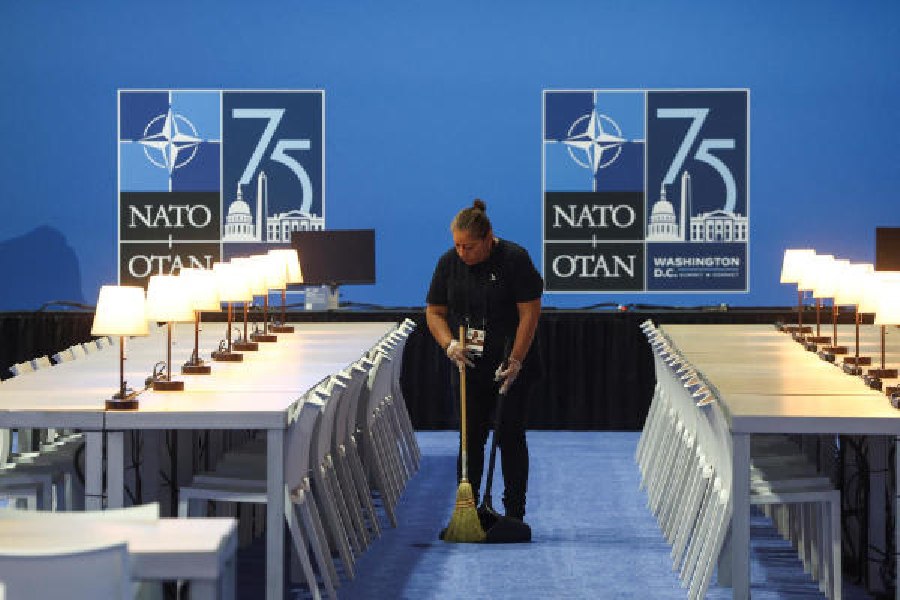When President Joe Biden and his aides planned the 75th anniversary of Nato, which opens in Washington, it was intended to create an aura of confidence.
The message to President Vladimir Putin of Russia and other potential adversaries would be that a larger, more powerful group of western allies had emerged, after more than two years of war in Ukraine, more dedicated than ever to pushing back on aggression.
But as 38 world leaders began arriving on Monday, that confidence seems at risk. Even before the summit formally begins, it has been overshadowed by the uncertainty about whether Biden will remain in the race for a second term, and the looming possibility of the return of former President Donald Trump.
Trump once declared Nato “obsolete”, threatened to exit the alliance and more recently said he would let the Russians do “whatever the hell they want” to any member country he deemed to be insufficiently contributing to the alliance. In recent days, as Trump has edged up in post-debate polls, key European allies have begun discussing what a second Trump term might mean for the alliance — and whether it could take on Russia without US arms, money and intelligence-gathering at its centre.
Biden will greet the leaders in the vast Andrew W. Mellon Auditorium a few blocks from the White House on Tuesday night — the same room where the treaty creating Nato was signed in 1949, in a ceremony presided over by President Harry S. Truman. Biden was 6 years old at the time, and the Cold War was in its infancy.
He is now 81 and perhaps the most vocal advocate in Washington for an alliance that has grown from 12 members in 1949 to 32 today as the era of superpower conflict has roared back. But as they gatherg, the leaders will be watching Biden’s every move and listening to his every word for the same signals Americans are focused on — whether he can go the distance of another four years in office.
Biden knows that, and said in an interview with George Stephanopoulos on ABC on Friday that he welcomed the scrutiny. “Who’s going to hold Nato together like me?” the President asked rhetorically. “I guess a good way to judge me,” he said, is to watch him at the summit — and to see how the allies react. “Come listen. See what they say.”
As they arrived, Nato leaders acknowledged that the alliance was facing a test they did not anticipate: whether it could credibly maintain the momentum it has built in supporting Ukraine when confidence in its most important player has never been more fragile.











